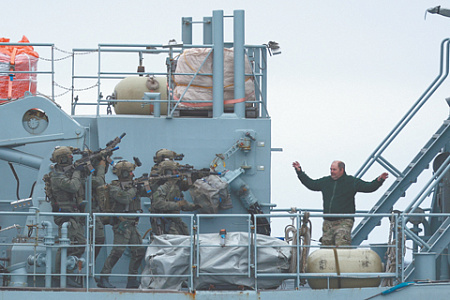
As NATO’s ‘Arctic Light 2025’ military exercises conclude in Greenland this week, a conspicuous absence raises pressing questions about the true nature of security threats in the High North. While Denmark, France, Germany, Sweden, and Norway participate in the drills on and around the autonomous Danish territory, the United States—the only ally with a permanent military contingent on the island—is not involved. This has fueled speculation about whether Copenhagen’s primary concern is a resurgent Russia or the potential ambitions of a future American administration.
Officially, the exercises are a response to “increased regional threats.” Søren Andersen, head of Denmark’s Joint Arctic Command, pointedly noted Russia’s reinforcement of its Arctic position, labeling it a regional “superpower” that could become more assertive globally. Yet, this official narrative seems to sidestep a more immediate and unconventional challenge: former U.S. President Donald Trump’s repeated and public desire to acquire Greenland, by purchase or even force. The official focus on Russia is viewed by some observers as a diplomatic veil over deeper anxieties regarding a key NATO ally.
Trump’s intentions, once dismissed as political theatrics, have been treated with increasing seriousness in Denmark. His administration’s interest was not merely rhetorical; Danish intelligence services reportedly investigated at least three individuals for attempting to conduct covert operations in Greenland aimed at encouraging the island to secede and join the United States, with suspected links to Trump himself. Against this backdrop, the current military drills, planned without American participation, appear to be a strategic rehearsal for a scenario that Danish officials cannot openly name.
Despite the apparent snub, Danish military leaders are carefully managing their public statements. Commander Andersen stressed the “very good relationship” with the U.S. military, highlighting decades of cooperation and even casually mentioning that Danish pilots would land at the American-run Pituffik Space Base for a “cup of coffee.” This deliberate emphasis on camaraderie, in the face of Washington’s exclusion from the drills, suggests a delicate diplomatic balancing act: preparing for a potential threat from a powerful ally without triggering an open confrontation.
Significantly, Denmark is not acting alone. France has provided the most substantial foreign contingent to the exercises, including a naval vessel, an aircraft, and a mountain infantry unit. French President Emmanuel Macron has been Europe’s most vocal opponent of any U.S. move on Greenland, with his foreign minister recently affirming on a visit to the island that “Greenland is Arctic, but also European territory.” This strong French backing signals a wider European Union resolve to protect Danish sovereignty and counter potential unilateral actions by Washington.
The situation in Greenland reflects a growing wariness within Europe toward the United States, particularly with the prospect of Trump’s return to power. His unpredictable foreign policy, trade disputes with allies, and transactional approach to security alliances have eroded trust. While the idea of a conflict between NATO members may seem surreal, it is not without precedent, as the 1974 Cyprus crisis between Greece and Turkey demonstrated. In an era where geopolitical norms are constantly being challenged, Denmark’s actions in the Arctic suggest it is preparing for a future that was once considered unthinkable.
